HP's 3D Printing Business President On The JetFusion 3D Launch, Channel Economics, Restricted Distribution And The 'Radical Shift' Ahead
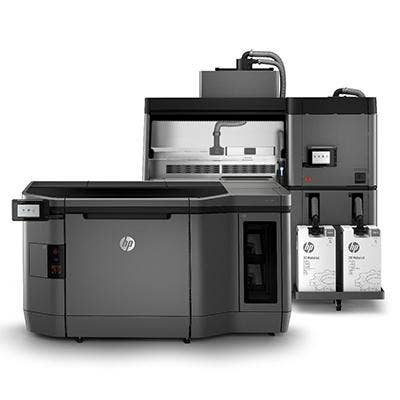
The Next Generation Of Printers
Stephen Nigro, president of HP Inc.'s 3-D printing business, spoke with CRN about the launch of the eagerly anticipated HP JetFusion 3-D printing solutions, which are aimed at redefining the economics in the commercial production manufacturing market.
Nigro spoke about the market dynamics for the new products, which were announced Tuesday at the RAPID manufacturing show, and about a "restricted" channel model aimed at giving highly specialized partners margin not only on product but on manufacturing materials, consumables and service and support.
Nigro, a 34-year HP veteran, started at the company as a research and development engineer and was instrumental in the development of the HP inkjet printing revolution. Leading the charge on 3-D printing, Nigro says, is a "little bit of going back to the future" given the entrepreneurial nature of the HP 3-D printing business. Here is an excerpt from the discussion with Nigro.
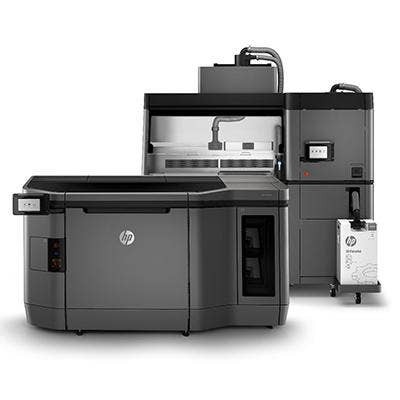
Talk about what HP is delivering to the market with the new JetFusion 3-D printing solutions.
What we are delivering is superior physical parts 10X faster than anyone else in the industry at half the cost in terms of the part cost. The reason we are able to do this is because we are leveraging so much from our 30 years of 2-D printing.
The price-performance relative to the solutions -- whether it is $100,000 or $500,000 -- is very disruptive. We definitely took a novel development model because 3-D printing is new to us. The announcement allowed us to identify co-development partners, if you will, who would work with us in developing the solution. That pretty impressive list of partners we work with includes BMW, Jabil, Nike, Siemens, Materialise, Shapeways and Protolabs.
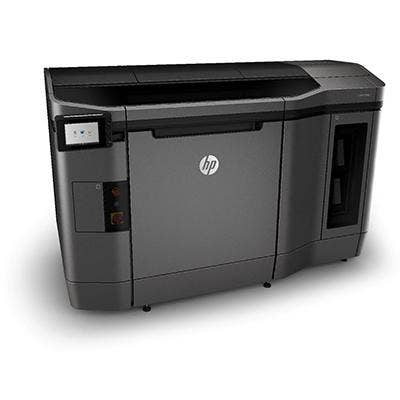
Talk about how you used JetFusion to print parts for the printers.
Almost half the custom plastic parts on the printer for the solution will be 3-D-printed with HP Multi JetFusion. The reason we are printing them is not because we can, but [because] we should. It actually makes economic sense for us to print them. So we think of this as the printer that actually is printing itself. That is kind of cool. This is something we learned. We would not have thought about printing the plastic parts. We would have just gone straight to molding it.

Talk about the open 3-D materials app platform.
What we are creating is a materials app store. What this means is third-party providers of development materials using our development kit will be able to set the price point of those materials. HP will certify those materials for use in our HP system, and the end customer will have this materials apps store where they will be able to buy HP- and non-HP-branded materials. We have a revenue share agreement and, by the way, the channel will participate in this as well.

Talk about the channel strategy for the 3D JetFusion Printing Solutions?
This is going to be a solutions sell. The channel is going to have to get in there and make the end customers aware of what they can do with the solution.
You are selling to different customers in the enterprise – engineering managers and ultimately supply chain managers, etc.
We view our channel as developing in two phases. In the first phase we wanted to go after those folks who have met a set of requirements for what it takes to sell 3D printing – in terms of being able to demo, service and support the products.

Talk about the channel profitability model for 3-D JetFusion printing solutions.
The model we have is actually that our channel partners will participate in all elements of the business. They will participate in the hardware margins, the agent margins. They will participate in the materials margin, and they will participate in the service and support margin.
What we are doing is creating a system unlike what we have done in our other businesses. If you are a channel partner and you sell that printer, you by definition have the rights to everything else.
It is going to be restricted distribution. In other words, you cannot as a channel partner sell into somebody else's installed base. You will get all the annuity from what you place.

Will there be exclusive territories for solution providers?
Resellers will not have exclusive territories. We are not going that far. But we will manage it. We are very aware. We want them to have a healthy business. We are not going to overdeploy.
What we have designed from a distribution standpoint is we are going to basically have what we call regional logistic service providers. So the product will go from HP to a regional logistic service provider who will handle the invoicing, financing and inventory. North America will have one regional logistic service provider, and they'll then work directly with all the different resellers. That is the model we are putting in place. It is not multiple distributors. It is a single distributor and the function of that distributor is financing, logistics, and inventory and cash management.

Who is the North American distributor?
We have not made that selection yet. As you can imagine, there is a lot of interest. For both North America and Europe we are working on a process to identify the ultimate providers.

How big is the full margin opportunity here given the printer sale, the materials and the consumables?
You can think of the business model as being almost 50 percent hardware and 50 percent aftermarket. So it is going to be a very attractive model as that will build as you build your installed base. Just like HP will benefit as we build the installed base, the channel will benefit by building their installed base.
We shared our channel program with some of the early potential channel partners, and it has been very positively received. They really like the fact that they are participating in the whole pie. When they get the printer placement they get the parts [sales] afterwards. They like having that future annuity model.

What is the investment required to play here and the payback period?
There is an investment up front and then payback in about 18 months to break even, and then you go from there.

What kind of investment is required to be successful here?
It depends on the infrastructure partners have in place. You need the demo capability and then you are going to have to put some of the equipment in place, which could be a couple hundred thousand dollars.
The real investment is going to be the people, the knowledge you are going to have to put in place, the people who can sell the solution and the service and support infrastructure. That cost will be determined by what they have in place today.

Talk about the first phase of the channel program.
The channel partners we are talking to today are specialized in the 3-D printer market. They know how to sell the solution. They have the showrooms. They have the service and support structure.
There will be enough of them to start to give us coverage around the world. It is not in the hundreds. It is a double-digit number of partners.
The first phase will go for one year to a year and half. And then in 2018 we will definitely expand our portfolio and, as we expand our portfolio up and down, we will launch an expanded channel.

Talk about phase two of the channel program.
We see in phase two a world where 3-D is becoming more and more mainstream so we are going to have to expand our channel coverage.
You are going to see the opportunity for traditional IT channel partners to build them up with a capability to sell 3-D solutions and to get into this business as well as the market grows.

What your message to partners who are interested in the 3-D printer opportunity?
The message is, ’Get ready.’ It is going to be a large opportunity. It is going to take a bit of time. It is not going to happen overnight. They haven't missed it, by any stretch. But it is a good time to start getting into it. The message is we are very clear what channel partners need to build. They need to build the expertise to sell a solution. They need to build in-house the ability to demonstrate this solution. And they need to build the service and support infrastructure necessary to support is their installed base.

How has the HP channel DNA really driven the channel program for the 3-D products?
One of the things that is really cool when you are designing a new business is the white sheet of paper. You have an opportunity to step back and say, ’How do I do this differently?’ What makes sense today? One of the areas I feel really good about what we did is our channel program.
We took a step back and thought about what works for the customers and the channel.
We debated it and came up with the design of restricted distribution, the holistic model where you get all the pieces. This was about really understanding what would work for the channel. We knew we had to get the channel motivated and it had to work financially. If you have a great technology and a great product but it doesn't work for the channel, it is not going anywhere.
We were very conscious to make sure that those that were willing to invest that it was going to be an investment with a return so it would be a great opportunity for the channel.
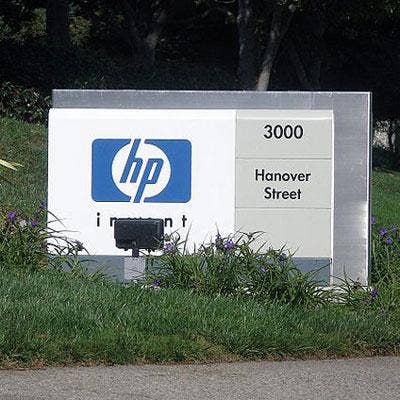
Talk about how you feel bringing this product to market.
For me, it is a little bit of going back to the future. I like to tell people I worked in HP Labs with inkjet technology before we had any products or revenue. What we had was a dream and a belief. We had no idea how big it was going to be. Anybody who says differently, they are kind of kidding themselves. Then we just went on this wild ride as we built this amazing business. And this feels the same way. We are about ready to launch; it is super exciting.
What is really exciting is the market opportunity is huge. We have to go after production, which is huge. The second thing is we are just beginning. What we are going to be able to do over the next five years will surprise ourselves in terms of amazing progress.

Talk about the progress you have made bringing the JetFusion 3-D to market.
The progress we have made in the last 12 months is crazy. One of the things we will be showing throughout the next week is future potential use cases -- the ability to print embedded circuits in cars. The ability to print ceramic parts. It is crazy. The opportunity is amazing. It feels like we are starting something that one day will be huge for HP and the world, for that matter.

Compare the team that did inkjet to the 3-D JetFusion team.
I joined HP in 1981.Inkjet technology was invented in 1979. We were working on it in the lab. We didn't get our first product out until 1985. We had all sorts of challenges and the team was small.
We were naïve. We didn't know what we were up against. We just kept solving the problems that came at us daily, and then the world just took off underneath us.
I actually set up the manufacturing operations in Singapore in 1990. The interesting thing is I looked at the inkjet business plan in 1990 and the business plan said we had plateaued. We set up our production in 1990 and every month our forecast just went up and up and up. We were just chasing demand. And we just chased volume for the next 10 years.

How big is the 3-D development team relative to that inkjet team?
Relative to that team we are very well-resourced. We are a lot more sophisticated. We have a lot more resources on 3-D printing than we did in the early days of inkjet 2-D printing. But the [3-D] technology is incredibly complicated. So there are a lot of tough problems to solve, but that is a great thing to have because as you solve these problems it allows you to have a unique position in the marketplace.
So our team is larger than those early days. The problems are just the same. We have a large number of problems. We have phenomenal engineer teams that will solve them. That feels the same. We are just solving problems every day and the opportunity is huge out there.
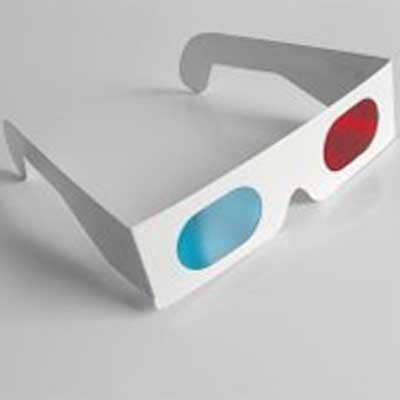
Talk about the entrepreneurial aspect of the 3-D development effort.
The way I would describe it is we are a startup inside of HP. We are running lean. But the thing we have as an advantage over any other startup in this space is our history and all our knowledge from HP, and we leverage HP. There is so much we leverage across HP. That gives us an amazing advantage.
We had a bunch of analysts in Barcelona the other week and we walked them through our development process. We took them into the labs where we expose the printers to humidity, cold weather. We shake them and drop them. You don't see any other 3-D printing companies doing that. That is just how we design our products. We leverage that. We are a startup inside this mature business, and that gives us a nice combination.

What are the expectations you are setting with regard to 3-D printer product delivery?
We will ship our first product by the end of this year. So it will be very limited with the lead partners we have. In 2017 we will be ramping. It is complex technology. It is a new platform. We are going to be scaling in the first half of 2017.
In the second half of 2017, we anticipate it will be wide open. Wide open will come in the second half of 2017. And then in 2018 we will continue to expand the portfolio and go from there.
So think of it as products by the end of 2016, a controlled ramp in the first half of 2017, open in the second half of 2017, expansion of the portfolio and then the opportunity in 2018 and beyond.

When is the first chance for traditional IT channel companies to get into this market?
I would say they need to start getting involved in the middle of 2017. We are going to be putting plans in place to take advantage of the expansion in 2018. They have to be building their investment plans so they are ready to go.

What is the future for this business?
We believe in the future it is ultimately going to change how products and supply chains are designed. You are going to see one day where products will be made local. That is a really radical shift. That is out there, but that is where this is going to head. So being in on the early stages of this shift from prototyping to production and building competency, you are getting into manufacturing. That is a $12 trillion industry.

What ultimately is the opportunity in 3-D for channel partners?
First off, the world is going to solutions. Whether we are talking cloud compute, on-demand software, SaaS. This is no different. This is a megatrend where the channel needs to look at how they add more value and sell solutions.
Five years from now what will happen is those who make the jump will be engaging deeply with large manufacturing opportunities and building competencies in certain verticals more likely. They are going to be able to be a trusted partner touching different parts of the business, but they will be selling solutions. It will be big and it will be all-inclusive because it is such a big opportunity when you talk about manufacturing.

How does it feel to finally get the product into the market?
I think it is an example of HP at its best. At HP, we have amazing employees, amazing commitment. I feel fortunate and humbled to be associated with the team and the talent and what they are able to do. Every day it is rewarding. It is a fortunate position to be in.